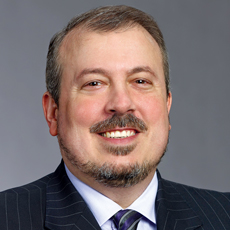
As the healthcare industry focuses on improving outcomes at every turn, payment for long-term care services is increasingly tied to clinical care quality measures. For example, the Centers for Medicare & Medicaid Services has proposed to modernize the discharge planning requirements as written in the Improving Medicare Post-Acute Care Transformation Act of 2014. These updates would require long-term care hospitals among post-acute care organizations to submit standardized data on quality measures across eight distinct domains. One of those domains is medication reconciliation.
And, rightly so.
Getting the right drugs to the right patients at the right time is a huge area of concern when it comes to the quality of care delivered in post-acute care environments. Simply consider the following: Due to advances in pharmaceuticals, the elderly now are prescribed more drugs than ever before. In fact, during a study of Medicaid patients in one state, 68% of nursing home patients took nine or more medications and 32% were administered more than twenty medications. In addition, the American Society of Health-System Pharmacists estimates 34% of senior citizens are prescribed medications by more than one physician, and 72% use medications they were prescribed more than six months ago.
Although these medications ultimately improve care, having multiple drugs to manage can be disconcerting for patients, caretakers and clinicians alike. Frequently, it all adds up to multiple opportunities for confusion when long-term care residents are coming into and departing from facilities. Add in the fact that LTC patients are also the most vulnerable and the possibility of medication errors becomes especially worrisome. Indeed, errors can result in a variety of unwanted care complications including suppressed appetite, incontinence, dementia, confusion, fractures and falls.
As such, medication reconciliation in post-acute care environments is becoming more important than ever before. Medication reconciliation is the process of avoiding inadvertent inconsistencies across transitions in care by reviewing the patient’s complete medication regimen at the time of admission, transfer, and discharge and comparing it with the regimen being considered for the new setting of care. More than 40% of medication errors are believed to result from inadequate reconciliation in handoffs during admission, transfer and discharge of patients. And, of these errors, about 20% are believed to result in harm.
The problem: Medication reconciliation at LTC facilities traditionally has been performed through a manual and, unfortunately, less than ideal process. When a patient arrives from home, an LTC clinician will try to retrieve medication information from the patient or family members and create a medication list upon admission. This process often falls short, as patients and their relatives often do not remember all of the medications and dosages that they are prescribed. If the patient is being moved from an acute care facility to the nursing home, then the clinicians will try to ascertain all the medication information from staff at the hospital. This process has it faults too, as LTC staff often have trouble connecting with the right hospital staff in a timely manner.
In addition, when LTC staff do receive medication lists from the hospital, these lists often do not include the medications that the patient had previously been taking at home. If a patient had been on a certain medication at home for the past year for example, it’s likely that they are still going to need the medication when they return to day-to day living at the nursing home. However, in some cases, those medications might have been discontinued while the patient was receiving acute care services in the hospital. As such, medication errors associated with omissions, duplication, dosing errors and drug interactions are likely to occur.
An automated process, however, can bring some much needed order to this seemingly chaotic process. First Databank’s MedsTracker® provides an electronic platform that enables doctors, nurses and pharmacists caring for patients to be on the same page with regards to medications. In essence, MedsTracker provides a simple way for all of these clinicians to combine medication lists from multiple sources into a single final list. As such, clinicians can quickly come up with an accurate medication list when a patient is being admitted to a LTC facility – and, conversely, can quickly assemble such a list when a patient is being discharged.
In addition, the system provides clinical decision support alerts – something that wouldn’t even occur even with the most comprehensive paper lists. As such, clinicians will immediately know when:
-
A patient has an allergy to a certain drug
-
A drug is not recommended for geriatric patients
-
There is the potential for a dangerous interaction between drugs
The process also reduces the volume of medications that a LTC facility will ultimately discard – and reduces the significant costs associated with doing so. Typically, LTC facilities receive large volumes of medications in unit dose packaging, as residents are expected to receive care in a facility for an extended period of time. However, if a LTC facility receives the wrong prescription, for example, the medications are discarded because they cannot be used for another patient.
What’s more, the electronic system also helps clinicians save time. The typical manual medication reconciliation process takes about 45 minutes to one hour. The electronic process, however, only takes about 10 minutes. As a result, nurses, pharmacists and other clinicians no longer have to bury their heads in the clerical work that diverts their attention from more meaningful clinical care leading to improving clinical quality measures and patient outcomes.
Dewey Howell, M.D., Ph.D., is vice president of clinical applications at First Databank where he focuses on developing highly usable and valuable health IT applications to support medication-related decisions. Howell also leads product development for FDB MedsTracker® a medication reconciliation application he designed and developed in 2005.



